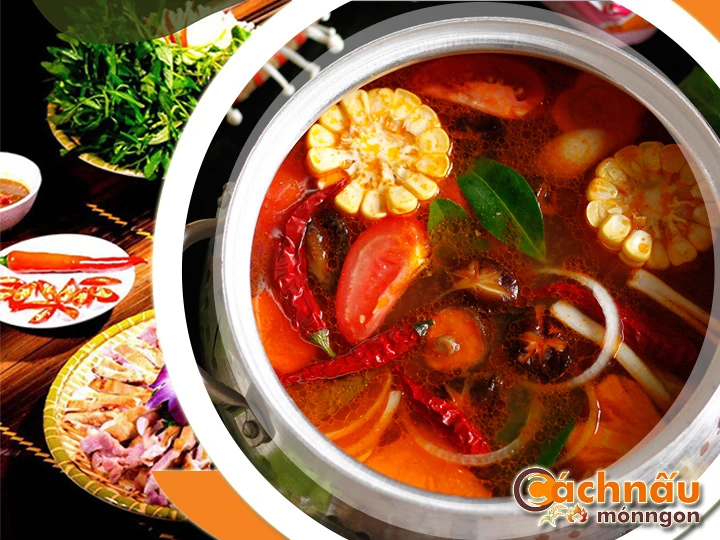Try the Easy Rabbit Hot Pot Ideas for Beginners - Lẩu thỏ
Try the Easy Rabbit Hot Pot Ideas for Beginners - Lẩu thỏ
Blog Article
Hot pot rabbit, a scrumptious and time-honored cuisine, has been cherished across multiple cultures and locales for centuries.

This comprehensive guide explores everything you need to comprehend about rabbit hot pot, from its old-world roots to present-day styles, nutritional values, and comprehensive walkthrough for creating the ultimate plate at home. Whether you are a experienced cook or a cooking enthusiast, this guide will motivate and prepare you to master the art of rabbit hot pot.
LEARNING ABOUT THE EVOLUTION AND PRACTICES CONCERNING {BRAISED RABBIT DISH|HEARTY RABBIT MEAL|RABBIT HOT POT|RABBIT STEW|BUNNY CASSEROLE|RABBIT CUISINE|STEWED RABBIT
Rabbit hot pot serves as a one-of-a-kind and classic dish with meaningful cultural roots in many areas. Its demand stems not only from its flavorful flavor but also from its legacy and traditions.
Rabbit hot pot is a unique and historical dish with deep customs in many areas. Its popularity stems not only from its delicious flavor but also from its heritage and meaning.
- Historical Roots: Rabbit stew began in agricultural regions where small game were a common, protein-rich food source. In historical China, it was a family favorite, particularly during special occasions.
- Spread Through Regions: In the West like Belgium, rabbit was traditionally used in slow-cooked dishes, adapting into modern versions of contemporary hot pots as the dish gained global appeal.
2. Hearty Rabbit Meal influencing Cultural Practices of East Asia.
- Within China: Known as the traditional rabbit hot pot, rabbit hot pot is a staple of the Sichuan region, admired for its robust flavors and typically served at intimate family events.
- Within Korea and Japan: While not as popular, rabbit hot pot is infrequently served as a healing cuisine in Korea, or taking cues from traditional nabemono dishes in the Japanese archipelago, incorporating local garden vegetables and condiments.
- Across Vietnam: Although rabbit hot pot is rarely a daily choice, it is popular during unique moments or in rural areas where rabbit meat is commonly found. It is often enhanced by distinctive spices such as fresh lemongrass, spicy ginger, and spicy chili, paired with fresh vegetables like swamp cabbage, green mustard, or sensitive plant. This dish is cherished for its special aroma and healthy attributes, frequently enjoyed during gatherings with friends or family.
Trong văn hóa Việt Nam, tuy không thường xuyên là món ăn phổ thông thường ngày, nhưng rất quen thuộc trong những ngày lễ lớn hoặc ở các vùng quê, nơi dễ dàng tìm thấy thỏ. Thường được phối trộn cùng các loại gia vị như sả, gừng tươi, và ớt, kết hợp với rau tươi bao gồm rau nhút. Món ăn này được yêu thích nhờ vị ngon độc nhất và lợi ích sức khỏe, thường được dùng trong các buổi gặp gỡ bạn bè.
3. Hearty Rabbit Meal embedded in Western Food Culture.
- Within France: Frequently enjoyed as a rich stew with red wine sauce, aromatic herbs including rosemary, and seasonal roots. Rabbit hot pot is a traditional recipe for festive gatherings.
- Within Italy: The dish called “Cacciatore”, featuring rabbit stewed in tomato and wine sauce, is a historical predecessor of hot pot-style rabbit dishes.
HOW TO COOK RABBIT HOT POT: RECIPES AND TECHNIQUES
Rabbit hot pot is a versatile dish that combines natural components, savory broths, and specialized methods to create a rich and flavorful experience. Below are essential tips into the primary methods and strategies to master rabbit hot pot.
The Fundamental Recipe for Rabbit Hot Pot
* Required Ingredients:
- 1 whole rabbit (chopped into parts)
- 4 cups of broth (vegetable)
- Vegetables (mushrooms)
- Spices and herbs (star anise)
- Seasonings (pepper)
- Optional: noodles for serving
* Method:
- Prepare Your Meat: Wash and cut the rabbit into pieces. Marinate with a pinch of salt, black pepper, and a drizzle of soy sauce for 30 minutes to boost the flavor.
- Create the Broth: Heat a pot with a touch of oil. Cook minced garlic and ginger until golden. Add your choice of broth and bring it to a simmer.
- Add the Rabbit: Add the rabbit pieces into the pot and chế biến lẩu thỏ let them cook slowly on low heat for around half an hour until cooked through.
- Incorporate Vegetables: Add your chosen vegetables and cook until they are tender but still fresh-looking.
- Serve: Transfer the hot pot to a serving dish. Serve with accompaniments and side options like rice or noodles.
Mastering Rabbit Hot Pot Techniques
- Flavor Enhancement:
. Marinate the rabbit with a combination of salt, pepper, and aromatics to intensify its original taste.
. For more complexity, use soy sauce or a mix of herbs such as rosemary and thyme.
- Adding Ingredients Strategically:
. Start by cooking the rabbit in the broth to extract its essence.
. Introduce vegetables step by step based on their cooking times.
- Perfect Timing:
. Avoid cooking too long the rabbit, as it can lose tenderness.
. Test for doneness by checking if the meat easily separates from the bone.
- Flavor Enhancements:
. Adjust the broth by adding additional seasonings as needed.
. Experiment with different types of broths, such as herbal-infused variations.
Secrets to a Perfect Rabbit Hot Pot
- Fresh Ingredients: Always choose high-quality rabbit and seasonal vegetables for the top flavor.
- Balance Flavors: Be attentive of the saltiness in the broth. Taste and adjust frequently during cooking.
- Sauce Pairings: Offer a selection of sauces like spicy garlic dip or soy-based dips to elevate the dining experience.
- Presentation: Use a portable stove or serve the hot pot as a focal point to encourage communal dining.
With mastery of these cooking techniques, you can create a rabbit hot pot that’s delicious and attractive, making it a highlight for any meal or dining experience.
Report this page
